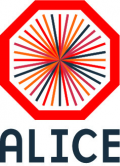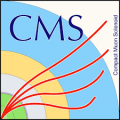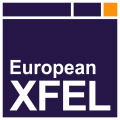1. PROFESSIONAL COOPERATION
Total membership fees in 2016: approx. HUF 127.7 million
|
|
Organisation, programme
|
Objective, characteristic feature
|
Member since
|
Membership fee for 2016
|
Benefits of the membership
|

|
COST
European Cooperation in Science and Technology

|
- harmonisation of technical and scientific basic research projects financed from national sources at a European level
- supported by the European Commission and the Council of Europe, funded from the H2020 budget
- actions coordinating the activity of national research institutions, universities and industrial businesses
- action objectives are determined by the researchers themselves in the form of grassroots initiatives
- the main criterion is scientific excellence
-
www.cost.eu
- Hungarian participation in COST actions
|
1991
|
EUR 6,783.87
(≈ HUF 2.1 million)
|
- participation of Hungarian researchers in European research cooperation programmes: good opportunities for young researchers to get involved in international scientific life
- access to the latest research findings: the findings of common research projects are generally freely accessible for participating countries
- 493 Hungarian researchers participated in COST actions in 2015, 39% of whom were young researchers
- in 2015 EUR 612,385 was spent on Hungary from the researcher networking budget
- in 2015 Hungarian researchers were involved in 235 actions in the following fields: IT, transport, telecommunications, materials science, environmental protection, forestry and forest products, agricultural science and biotechnology, food technology, social sciences, medical research, general engineering, chemistry, meteorology, physics
|
|
EUREKA
European market oriented R&D cooperation

|
- enhancing the global competitiveness of Europe through the coordination of industrial and technological research
- projects are funded in the R&D stage preceding market entry
- open toward all fields of technology ensuring wide scope for the applicants' innovative ideas
- its flexible system is an excellent platform for bilateral or regional project activities
- participants are mainly businesses, for-profit institutions, SMEs and research centres (universities and research institutions)
- the EUROSTAT programme operating in the framework of the cooperation is specifically designed to support SMEs involved in R&d
-
www.eurekanetwork.org
-
www.eurostars-eureka.eu
|
1992
|
EUR 34,000
(≈ HUF 10.5 million)
|
- opportunity for SMEs to launch innovative projects in international consortia without any restriction on the topic
- opportunity for joining leading research groups and consortia led by prominent European large companies
- max. 30% of domestic funds provided to EUROSTARS projects is returned to Hungary in the form of EU co-financing
- since joining the organisation Hungarian businesses and research institutions have participated in around 100 EUREKA projects
- presently 36 EUREKA and 23 EUROSTARS projects are in progress with Hungarian participation
- on average, the rate of successful applications is 30% for domestic EUREKA projects, and 20% for EUROSTARS projects with Hungarian involvement
|
|
Active and Assisted Living Programme

|
- the aim is to assist the life of elderly people by developing info-communication devices and services
- support of projects co-financed from EU sources and implemented in international consortia, creation of marketable products and services promoting the objectives of the programme
-
www.aal-europe.eu
|
2008
|
EUR 10,000
(≈ HUF 3.1 million)
|
- available source for developing and marketing products and services in the given field
- annual exhibition where new products and services are presented among others to potential investors (social insurers, venture capitalists)
- the results of the programme, i.e. the new products and services, are potentially advantageous for all aging societies, including Hungary (social innovation)
- since 2008, 38 Hungarian members have participated in 21 projects to develop marketable products and services in international consortia
- 42-49% of the funds provided to Hungarian applicants have been financed from EU sources
|
|
ICGEB
International Centre for Genetic Engineering and Biotechnology

|
- autonomous intergovernmental organisation
- aims to make less industrialized countries able to use the latest achievements of biotechnology
- biotechnological research projects take place in three well-equipped further training and research centres with the involvement of a few permanent and many fellow researchers
- 64 member countries
-
www.icgeb.org
|
1987
|
40 300 USD
(≈ HUF 11 million)
|
- Hungarian researchers can apply for grants annually for high-standard biotechnological research projects (Collaborative Research Programme, CRP) as well as for PhD and Post-doc fellowships
- between 1988 and 2015 Hungarian research groups received a total funding of USD 1,442,400 for involvement in collaborative research projects (CRP)
- between 1988 and 2015 26 Hungarian researchers received PhD and Post-doc grants in a value of altogether USD 634,642
|
|
EMBL
European Molecular Biology Laboratory

|
- interstate research organisation dealing with life sciences
- its research performance is second to none among non-American institutions involved in genetics and molecular biology
- it is a leader in integration of European life sciences research and takes part in seven research infrastructure projects in biology and medical science in the EU
- (free) associate membership until 2017
- 20 member countries
-
www.embl.org
|
2014
|
- from 2017 the fee of permanent membership is EUR 300,000
(≈ HUF 93 million)
|
- opportunities for Hungarian researchers to take part in leading life sciences research projects
- access for Hungarian researchers to the most advanced research infrastructures and services
- training and further training opportunities in the framework of the EMBL International PhD Programme
|
|
VKI
The von Karman Institute for Fluid Dynamics

|
- non-profit international educational and scientific organisation
- three specific fields: aeronautics and aerospace, environment and applied fluid dynamics, turbomachinery and propulsion
- post-gradual training in fluid dynamics, extensive experimental, IT and theoretical research on gas and fluid flow, mainly financed by governmental and international agencies and industrial actors
-
https://www.vki.ac.be
|
2001
|
26 000 EUR
(≈ HUF 8 million)
|
- Hungarian researchers receive around EUR 200,000 scholarship grants every year
- in academic year 2014/2015 and 2015/2016 respectively six and eight Hungarian researchers received grants from different departments of BME and ELTE in the fields of Aeronautics and Aerospace, Environmental and Applied Fluid Dynamics
|
2. INTERNATIONAL RESEARCH INFRASTRUCTURE
Total membership fees in 2016: approx. HUF 3181.4 million
|
|
Organisation, programme
|
Objective, characteristic feature
|
Member since
|
Membership fee for 2016
|
Benefits of the membership
|

|
CERN
European Organization for Nuclear Research

|
- the main profile is basic research in physics: to discover what the universe is made of and how it works
- the largest particle physics laboratory in the world; half of particle researchers work in CERN projects globally
- it studies subatomic particles with unique equipment: particle accelerators and detectors (accelerators greatly increase the energy of particle beams before letting them collide to each other or to fixed targets, while detectors detect and record collisions)
- the Large Hadron Collider (LHC) is the largest and most powerful particle accelerator in the world
-
http://home.cern
|
1992
|
6 915 800 CHF
(≈ HUF 1,936 million)
|
- access by Hungarian researchers to internationally unique and costly large research equipment
- opportunities to make new discoveries in basic research in physics which can serve as the basis for later developments
- every year around 80 Hungarian researchers participate in research projects in relation to various experiments (ALICE – 30 persons, CMS – 40 persons, ASACUSA – 3 persons, NA61 – 3 persons, TOTEM – 4 persons)
- supply delivered by Hungarian industrial actors: total supply value reached CHF 1,710,000 in 2011, CHF 2,988,000 in 2012, CHF 5,140,000 in 2013, CHF 3,515,000 in 2014 and CHF 3,597,619 in 2015 (Hungary is a “well-balanced country” in terms of its membership fee proportionate share)
- The number of Hungarian staff members in the CERN is high compared to its membership fee proportionate share (approx. 10 persons)
- annually 4-5 Hungarian summer student receive scholarship grant, and 40-50 physics teacher takes part in study tours; the programmes of the visitor centre are still open
- The Wigner Research Centre for Physics of the Hungarian Academy of Sciences is contracted to operate the CERN Tier-0 computer centre in the Wigner Data Centre until 2019
- share in the scientific findings of the experiment
- 30 researchers participate in it
|
CERN LHC ALICE experiment
A Large Ion Collider Experiment

|
- ALICE a heavy-ion detector experiment on the Large Hadron Collider ring
- it is focusing on the physics of strongly interacting matter at extreme energy densities where a new state of matter, namely the quark–gluon plasma (QGP) appears
-
http://aliceinfo.cern.ch
|
1989 and 2000
|
55 000 CHF
(≈ HUF 15.4 million)
|
- share in the scientific findings of the experiment
- 30 researchers participate in it
|
CERN LHC CMS experiment
Compact Muon Solenoid

|
- CMS is a general-purpose detector on the LHC ring
- the wide scope of its physics programme ranges from the Standard Model (including the Higgs boson) to studying the extra dimensions and particles thought to constitute the dark matter
-
http://cms.web.cern.ch
|
1990 and 2000
|
110 000 CHF
(≈ HUF 30.8 million)
|
- share in the scientific findings of the experiment
- 40 researchers participate in it
|
|
European XFEL
European X-Ray Free-Electron Laser Facility

|
- pending investment in international research infrastructure
- when completed, it will become Europe's first and the world's largest hard X-ray free-electron laser
- business company in the DESY (Deutsches Elektronen-Synchroton) research centre
- its membership entitles Hungary to 1% share in the company
-
www.xfel.eu
|
2009
|
2 200 000 EUR
(≈ HUF 682 million)
|
- the future access by Hungarian researchers to internationally competitive and costly large research equipment
- measurements and experiments can be performed to the extent of the beam time provided by the membership
- potential new findings in the fields of molecular biology, genomics, medical diagnostics, therapeutic applications, nanotechnology and related materials science etc.
- efforts toward in-kind contributions; no specific supplier has been found yet
- industrial supplies for operative purposes (future opportunity)
|
|
ESS
European Spallation Source

|
- one of the largest pending research infrastructure investment of the EU
- large energy particle accelerator; when completed, it will be the world's largest spallation source of its kind
- parts of the facility will operate in 2023 but its full capacity will be reached in 2028
-
https://europeanspallationsource.se
|
2014
|
1 640 000 EUR
(≈ HUF 508.5 million)
|
- future access by Hungarian researchers to internationally competitive and costly large research equipment
- the membership fee currently covers building costs as well, 70% of which is returned to domestic suppliers in the form of supply orders
- involvement of three Hungarian research institutions (Wigner Research Centre for Physics – HAS, Energy Research Centre – HAS, Atomki – HAS) and many innovative businesses
- moral and financial benefits for the domestic R&D sector
- economic boost for Hungary (capacity expansion, job creation)
|
|
ITER
International Thermonuclear Experimental Reactor

|
- large-scale research infrastructure aimed at conducting fusion experiments for commercial purposes
- 7 funding partners: EU, South Korea, China, USA, Japan, India and Russia
- Hungary is part of the cooperation by means of its EU/EURATOM membership
-
www.iter.org
|
2007
|
28 000 EUR
(≈ HUF 8.7 million)
|
- access by Hungarian researchers to internationally competitive and costly large research equipment
- potential new findings in the theory and application of nuclear physics
- research grants and opportunities for industrial supply
- opportunity to provide industrial supplies in the F4E tenders of the EU membership coordinator
- in 2011-13 many Hungarian institutions received funding for their projects from F4E, raking Hungary fifth in received funding and eighth in the number of applications. Further applications are pending evaluation; Hungarian institutions are expected to play an important role in ITER diagnostics developments (measurement technology)
- Hungary is placed well among member countries in winning research scholarship grants
|
3. ORGANISATIONS PROVIDING HELP IN MAKING SOUND RDI-POLICIES AND STRATEGIC PLANNING
Total membership fees in 2016: approx. HUF 7.8 million
|
|
Organisation, programme
|
Objective, characteristic feature
|
Member since
|
Membership fee for 2016
|
Benefits of the membership
|

|
OECD
GSF GLobal Science Forum

|
- OECD aims to help member states make the best possible economic and social policies
- it pursues analytical and research activities in the field of economic policy and social sciences at its forums and working organisations
- the Global Science Forum (GSF) focuses on international scientific and technological cooperation
- consultation forum for leading representatives of scientific policy-making
- prepares draft action plans in priority scientific policy issues
- identifies significant opportunities for scientific cooperation
-
www.oecd.org/sti/sci-tech/oecdglobalscienceforum.htm
|
1996
|
2000 EUR
(≈ HUF 0.6 million)
|
- access to information (statistics, analyses) essential for planning national policies and strategies
- benefits of the conventional public confidence toward members (e.g. in the international money market: comparable and stable standards of evaluation)
- participation in specialised committees (scientific, technological, industrial and innovation policy related international trends, best practices, research and analysis of plans for the future)
|
|
Science Europe

|
- association of European research performing and research funding organisations
- strengthens the European Research Area (ERA) through the European Commission and Member States and relying on the active participation of the scientific community
- ministerial level consultation forum aimed at ensuring that publically financed national research and innovation brings the greatest possible economic and social benefit for Europe
-
www.scienceeurope.org
|
2012
|
5000 EUR
(≈ HUF 1.5 million)
|
- representation of the interests of Hungarian researchers and basic research projects in the standing committees in various fields of science (Social Sciences, Humanities (!), Physical Sciences, Engineering)
- representation of the interests of Hungarian researchers and basic research projects in thematic working groups (Open Access, Cross-Border Collaboration, Research Policy and Programme Evaluation, Research Integrity)
- lobbying for the creation of a European R&D policy (EC)
|
|
TAFTIE
The European Network of Innovation Agencies

|
- cooperation of European institutions managing national RDI programmes in technology
- exchange of experiences and best practices (management of governmental tasks and subsidy programmes, further development of innovation services)
-
www.taftie.org
|
2009
|
10 000 EUR
(≈ HUF 3.1 million)
|
- interest representation at European level in running and planned RDI projects
- opportunity to participate in the ad-hoc working groups (State Aid, Benchmarking Impact, Effectiveness and Efficiency of Policy Instruments Implemented by Innovation Agencies, Competence Centres, Project Selection Procedures)
- information for strategic RDI plans
- learning about current issues and trends, assisting domestic preparation, training programmes
|
|
ESF
European Science Foundation

|
- non-profit organisation for the promotion of cooperation in European research and development
-
www.esf.org
|
1996
|
8500 EUR
(≈ HUF 2.6 million)
|
- own programmes for funding basic research projects
- Hungarian participation in EUROCORES (European Collaborative Research) basic research projects
- its coordination role has been taken over by Science Europe, so the NRDI Office will terminate its membership after 2016
|



















